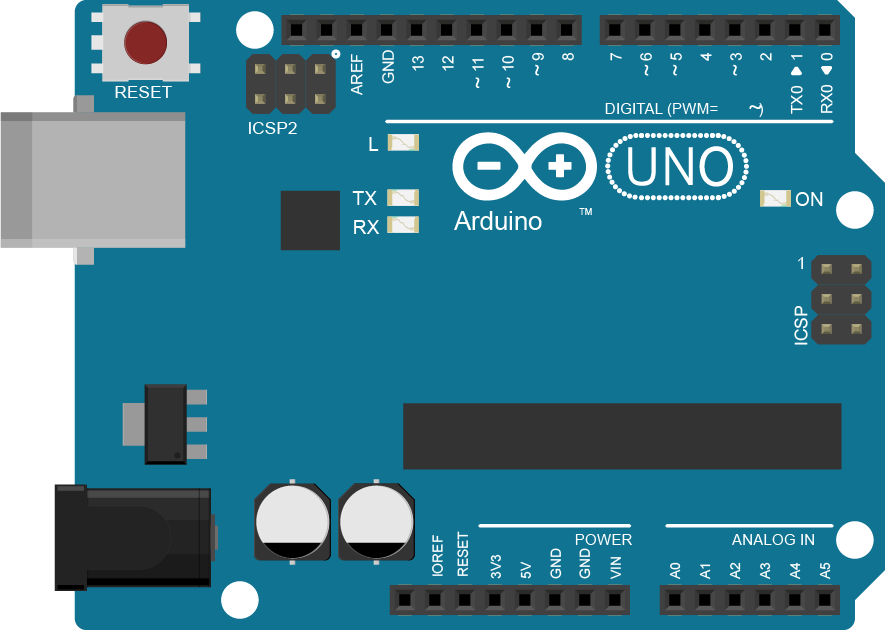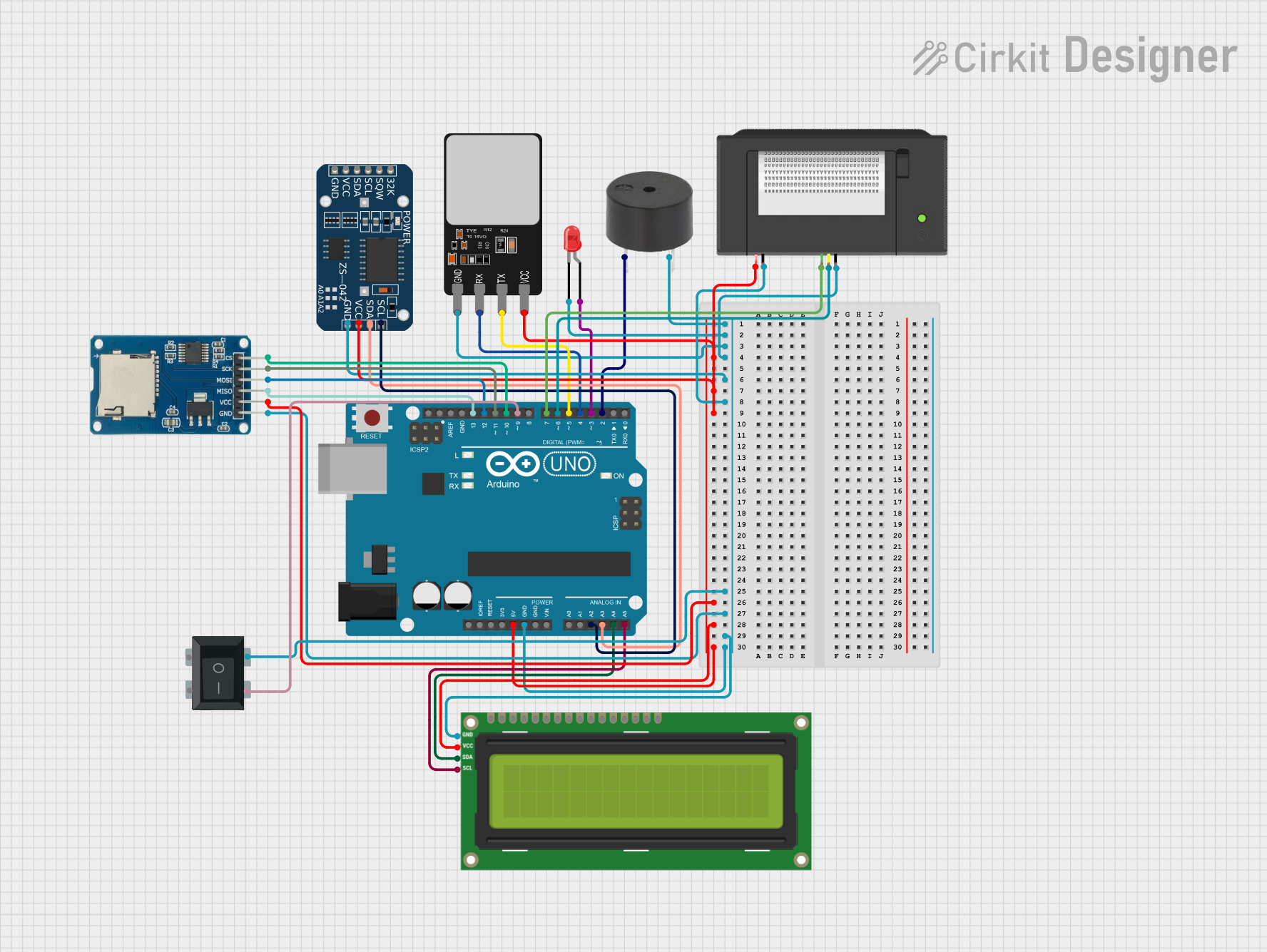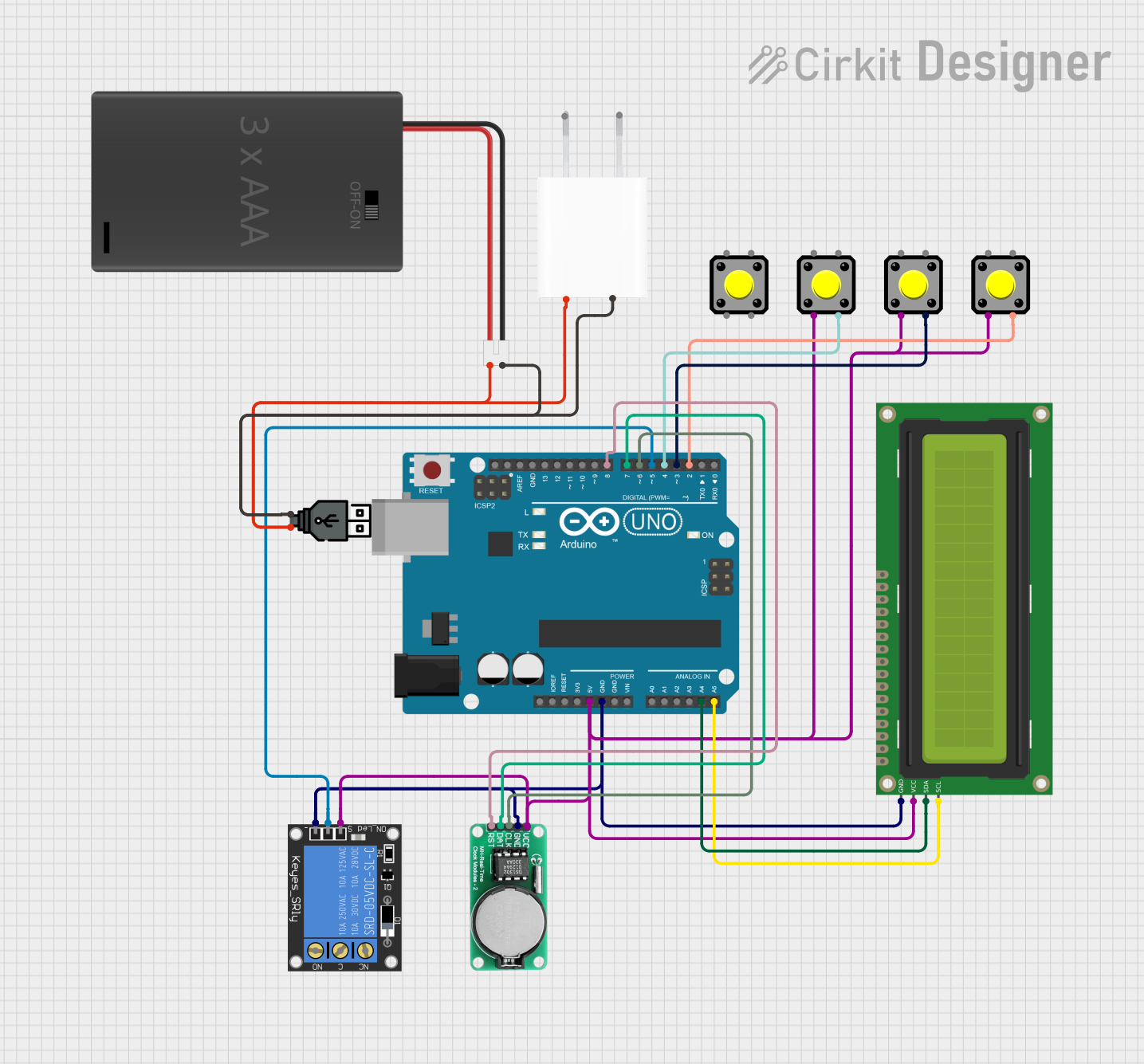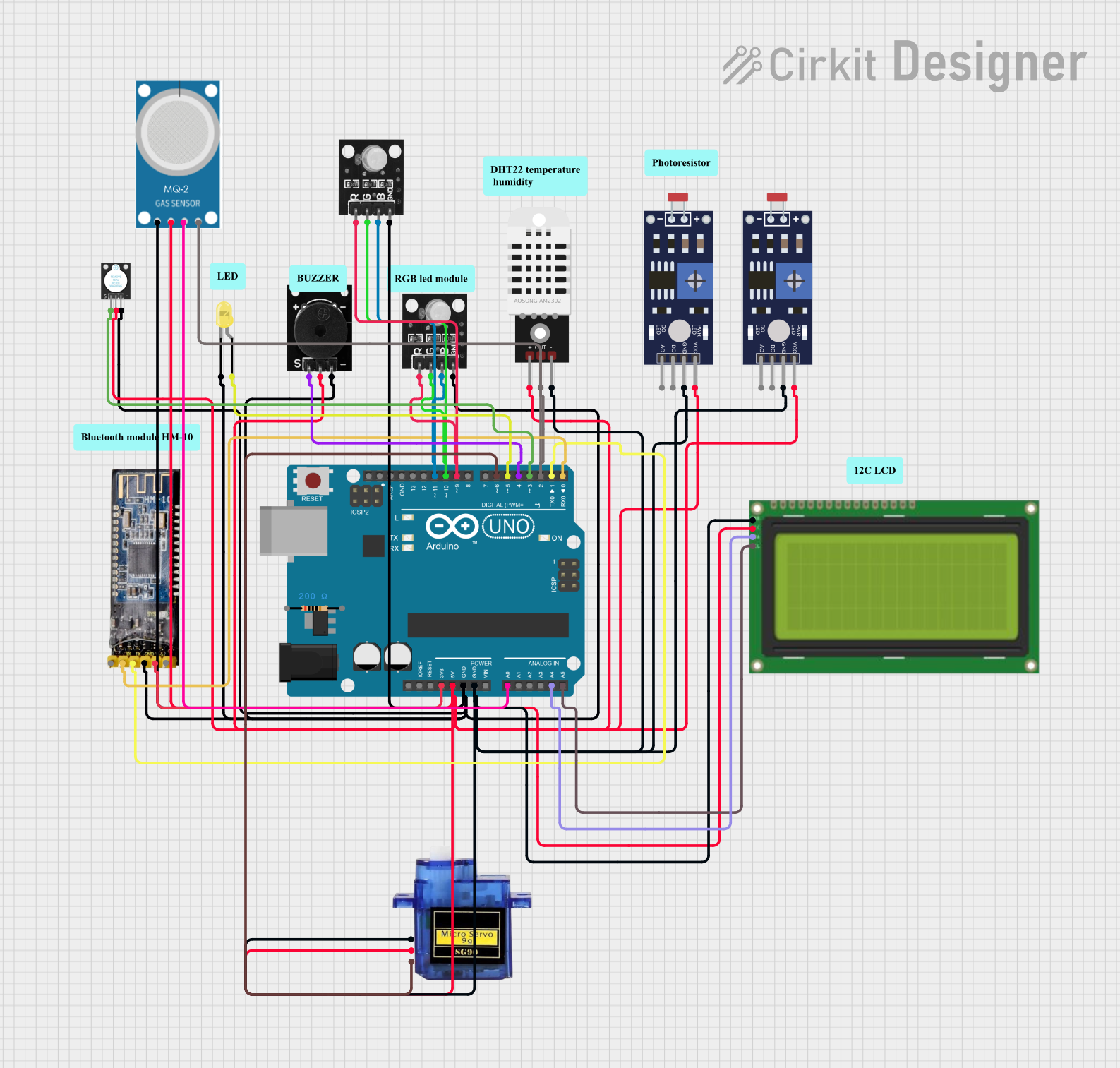
How to Use Arduino UNO: Examples, Pinouts, and Specs

 Design with Arduino UNO in Cirkit Designer
Design with Arduino UNO in Cirkit DesignerIntroduction
The Arduino UNO is a microcontroller board based on the ATmega328P. It is one of the most popular and versatile development boards in the Arduino ecosystem, widely used for building digital devices and interactive objects that can sense and control the physical world. The board is beginner-friendly yet powerful enough for advanced projects, making it a favorite among hobbyists, students, and professionals.
Explore Projects Built with Arduino UNO

 Open Project in Cirkit Designer
Open Project in Cirkit Designer
 Open Project in Cirkit Designer
Open Project in Cirkit Designer
 Open Project in Cirkit Designer
Open Project in Cirkit Designer
 Open Project in Cirkit Designer
Open Project in Cirkit DesignerExplore Projects Built with Arduino UNO

 Open Project in Cirkit Designer
Open Project in Cirkit Designer
 Open Project in Cirkit Designer
Open Project in Cirkit Designer
 Open Project in Cirkit Designer
Open Project in Cirkit Designer
 Open Project in Cirkit Designer
Open Project in Cirkit DesignerCommon Applications and Use Cases
- Prototyping and testing electronic circuits
- Building IoT (Internet of Things) devices
- Robotics and automation projects
- Data logging and sensor-based systems
- Interactive art installations and DIY projects
Technical Specifications
The Arduino UNO is designed to provide a balance of simplicity and functionality. Below are its key technical details:
General Specifications
| Parameter | Value |
|---|---|
| Microcontroller | ATmega328P |
| Operating Voltage | 5V |
| Input Voltage (recommended) | 7-12V |
| Input Voltage (limit) | 6-20V |
| Digital I/O Pins | 14 (6 PWM outputs) |
| Analog Input Pins | 6 |
| DC Current per I/O Pin | 20 mA |
| Flash Memory | 32 KB (0.5 KB used by bootloader) |
| SRAM | 2 KB |
| EEPROM | 1 KB |
| Clock Speed | 16 MHz |
| USB Connection | Type-B |
| Dimensions | 68.6 mm x 53.4 mm |
| Weight | 25 g |
Pin Configuration and Descriptions
The Arduino UNO has a total of 28 pins, including digital, analog, power, and communication pins. Below is a detailed description of the pin configuration:
Digital Pins
| Pin Number | Functionality |
|---|---|
| 0 (RX) | Serial Receive (UART) |
| 1 (TX) | Serial Transmit (UART) |
| 2-13 | General-purpose digital I/O |
| 3, 5, 6, 9, 10, 11 | PWM output (Pulse Width Modulation) |
Analog Pins
| Pin Number | Functionality |
|---|---|
| A0-A5 | Analog input (10-bit resolution) |
Power Pins
| Pin Name | Functionality |
|---|---|
| VIN | Input voltage to the board |
| 5V | Regulated 5V output |
| 3.3V | Regulated 3.3V output |
| GND | Ground |
| RESET | Resets the microcontroller |
Communication Pins
| Pin Name | Functionality |
|---|---|
| SDA | I2C Data Line |
| SCL | I2C Clock Line |
| SPI (10-13) | SPI Communication (MISO, MOSI, SCK, SS) |
Usage Instructions
The Arduino UNO is straightforward to use, even for beginners. Follow the steps below to get started:
Step 1: Install the Arduino IDE
- Download the Arduino IDE from the official Arduino website.
- Install the software on your computer.
Step 2: Connect the Arduino UNO
- Use a USB Type-B cable to connect the Arduino UNO to your computer.
- The power LED on the board should light up, indicating it is powered.
Step 3: Write and Upload Code
- Open the Arduino IDE and select Tools > Board > Arduino UNO.
- Select the correct COM Port under Tools > Port.
- Write your code in the IDE or use the example below:
// Blink an LED connected to pin 13 void setup() { pinMode(13, OUTPUT); // Set pin 13 as an output } void loop() { digitalWrite(13, HIGH); // Turn the LED on delay(1000); // Wait for 1 second digitalWrite(13, LOW); // Turn the LED off delay(1000); // Wait for 1 second } - Click the Upload button to upload the code to the Arduino UNO.
Step 4: Connect Components
- Use jumper wires to connect sensors, actuators, or other components to the appropriate pins.
- Refer to the pin configuration table for guidance.
Important Considerations and Best Practices
- Always check the voltage and current ratings of connected components to avoid damage.
- Use external power (via the VIN pin or power jack) for high-power projects.
- Avoid drawing more than 20 mA from any single I/O pin.
- Use pull-up or pull-down resistors for stable digital input signals.
Troubleshooting and FAQs
Common Issues and Solutions
Problem: The Arduino UNO is not detected by the computer.
- Solution: Ensure the USB cable is properly connected and functional. Install the necessary drivers from the Arduino IDE.
Problem: The code does not upload to the board.
- Solution: Verify that the correct board and COM port are selected in the Arduino IDE. Press the RESET button on the board before uploading.
Problem: The connected components are not working as expected.
- Solution: Double-check the wiring and ensure the components are compatible with the Arduino UNO.
Problem: The board overheats during operation.
- Solution: Ensure the input voltage does not exceed 12V. Avoid drawing excessive current from the pins.
FAQs
Can I power the Arduino UNO with a battery?
- Yes, you can use a 9V battery connected to the power jack or the VIN pin.
What is the maximum current the Arduino UNO can supply?
- The 5V pin can supply up to 500 mA when powered via USB, and the 3.3V pin can supply up to 50 mA.
Can I use the Arduino UNO for wireless communication?
- Yes, you can use external modules like Bluetooth, Wi-Fi, or RF transceivers connected to the appropriate pins.
By following this documentation, you can effectively use the Arduino UNO for a wide range of projects and applications.